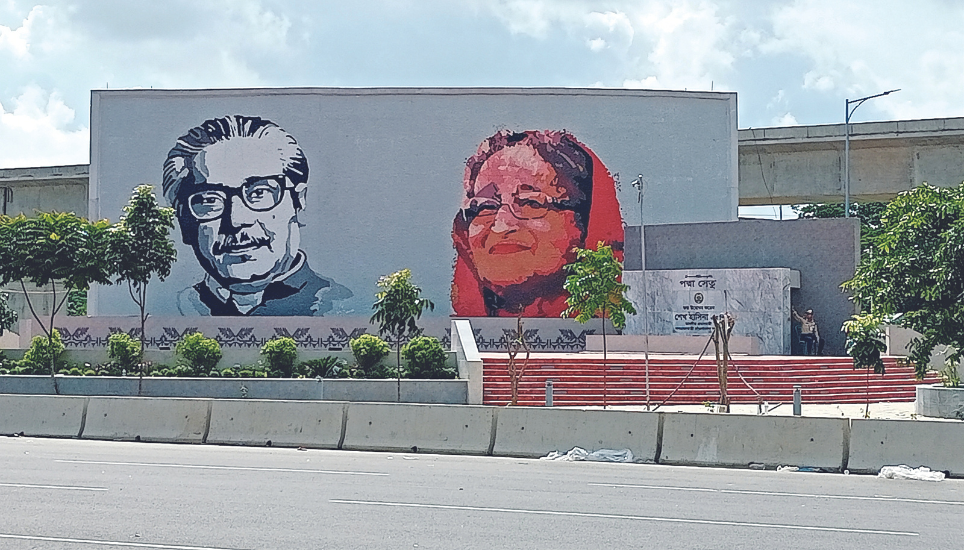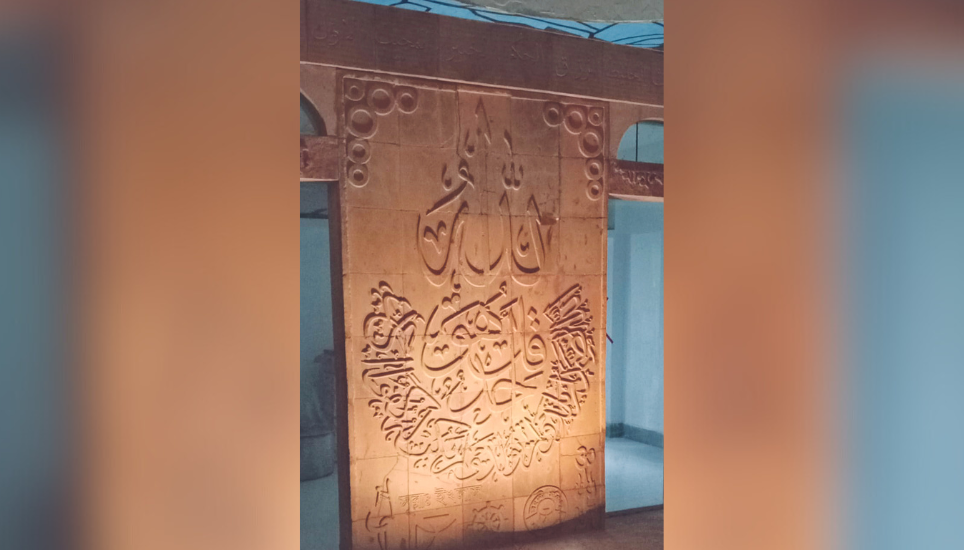
Even though the history of terracotta has thousands of years in this Bengal region, there is no lack of demand for the art in the modern era as well. Rather, people’s tastes have changed with increasing their income. The innovative design increases the art’s demand. People want to uphold their history and tradition through terracotta, murals and sculpture.
Nowadays, terracotta murals with traditional Bengali folk symbols and the Liberation War are seen on walls of different establishments like museums, educational institutions, offices, stadiums, restaurants and squares of roads.

The symbols of the Language Movement and Liberation War are noticeable arts in the country. These terracotta, murals and sculptures touch people’s hearts easily as history was made through a bloody struggle.
In our country, different ministries and departments allocate a good number of funds to set up the arts at various places.
Nokkhotro ensures innovative design
The Nokkhotro is a sculpture and pottery institute established in 2009 by artist Ashraful Alam Riaz in association with Muhammad Rawshan Ali so that the history and traditions of the country can be highlighted through art work to the next generation.
“We are moving forward by doing small art-works. At the end of 2011, the artist Shrivas Basak joined in the Nokkhotro. After that, we never looked back. Today’s Nokkhotro is the result of our tireless work,” Ashraful said.
“Primarily I learned my art-works after admitting at the Fine Arts Institute of Dhaka University in 2003. Later, I learned many things including building murals, terracotta and sculpture from the institution, and several prominent artists of the country. However, artists Shrivas Basak and Khoshed Alam are key persons behind establishing the Nokkhotro.”
“We have around 150 art-works till now. Most of them are mural and terracotta. I only built a sculpture--‘Bangabandhu sculpture’ at Rajbari square of Faridpur,” he informed.
“Despite huge demand for pottery items in the global market, Bangladesh cannot take the opportunity due to lack of proper marketing, and policy support from the government,” the mural artist stated.
He explained that Bangladesh’s pottery items like crockery, mural, and terracotta have a good demand to local and international people thanks to unique designs. But we can’t earn more money from industry to export the items due to lack of policy support and marketing. He made the terracotta with
clay, and mural and sculptures are made of ceramic plates.
Earlier emperors used earthenware and decorated their basilicas as well as different important places with mural and sculpture by famous artists. Nowadays, murals and sculptures are built in different sites to remember history and show beauty, he added.
“My institution has already produced 120 murals, 30 terracottas and one sculpture. Of them, our remarkable mural and terracotta are --‘52-71 Shironame’ and ‘Sheikh Rasheel’ murals at Dhanmondi, ‘Muktir Dak’ mural at Nikunj-1 of Khilkhet which was inaugurated by former President Abdul Hamid, and Terracotta of Osmani International Airport in Sylhet.”

Mural on Padma Bridge site
Bangladesh’s the highest two murals are--‘Bangabandhu’ and ‘Sheikh Hasina’ are situated at both sides of Padma Bridge. One is at Mawa site of Munshiganj and another is at Zanjira site of Shariatpur. Meanwhile, artist Ashraful built the mural of Zanjira site.
“It’s my best work so far. The mural of Zanjira site is 72-feet long, and 36-feet high. We used to work by 18 artists and 22 workers between April-June 2022 to construct the Padma Bridge mural at the Zazira site,” he informed.
Industry’s current situation and prosperity
Now around 50-60 artists are involved inside and outside of 8-10 institutions in the sector across the country. Many students come out from Fine Arts Institute of Dhaka University every year but fewer are involved in the industry. Its key reason is finance.
“We notice huge demand for our arts in the international market as well. Our Cultural Ministry should arrange fairs and exhibitions in different places at home and abroad. We need marketing more to display to the world people, we can earn more foreign currencies which would help to boost our economy”, the artist said.
However, I suggest that newcomers who would like to come in the sector to be persistent, and take challenges. Artists can uphold the country’s history and tradition for the next generation. So, we need proper policy support from the government.
We want to keep Bangladesh’s tradition and history through murals, terracotta and sculpture for the next generation. I have a plan of building 100 most influential people’s mural across the country, he furthered.
“As ceramic products are used in our works, so i request ceramic companies to sponsor us to continue the work across the country and abroad. It will help to expand the ceramic market as well.”
“I urge the cultural ministry to take an initiative to arrange fairs home and abroad so that our artists can display their artwork in those exhibitions,” Ashraful added.